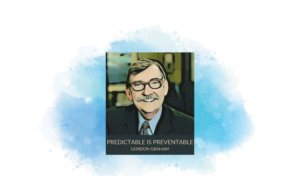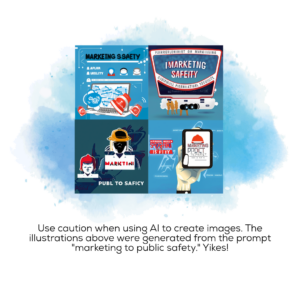
Of all the public safety disciplines, law enforcement occupies a unique place in American culture. Generations of Americans have grown up with police detectives daily gracing the screens of their living room televisions. From Miami Vice and Law & Order to CSI and NCIS, cop shows have shaped many of our impressions of the men and women who have sworn to “protect and serve.” Undoubtedly, these idealized characters inspired many to pursue a career in law enforcement.
But, in some ways, regular exposure to TV cops has muddied our understanding of law enforcement and its culture. For marketers new to the public safety sector, this media-filtered view of America’s police can hinder rather than help the effectiveness of your marketing campaigns and efforts.
Marketing to law enforcement leaders has never been a simple proposition. Police regularly contend with situations that require them to quickly discern if they’re being lied to or misled. So don’t exaggerate results or promise what you can’t deliver — be straight with them. To reach your law enforcement customers, your pitch has to be simple, succinct and to the point. More importantly, it has to be true. But for your appeal to be impactful, you first need to earn the trust of your prospects.
And that’s often easier said than done.
The job of policing America’s neighborhoods has always been tough. Today, those challenges are further compounded by new technological and social realities. Contemporary media is not just an unreliable source for insight into this group; in many instances, these portrayals are flat wrong..
What does popular culture get wrong about America’s police forces? And what should you know about law enforcement to make your marketing efforts more effective?
Tailor Your Approach to Law Enforcement Marketing
If you ask someone to picture a typical police department, most people would probably describe a noisy, bustling precinct with suspects and criminals being shuffled in and out. Or perhaps a detective squad room with rows of desks staffed by tired, weary homicide investigators who’ve seen too much.
The truth is, while most people envision huge police stations brimming with officers, most police departments are actually fairly small — less than 50 people. (As compared with approximately 36,000 officers in New York City, 12,000 in Chicago, and 9,000 in Los Angeles.) Departments with at least 100 officers represent onlyfive percent of all police agencies in the country. According to a2019 U.S. Department of Justice survey of local police departments, more than two-thirds (71%) of local police departments served populations of fewer than 10,000 residents
Moreover, there is tremendous diversity in many police departments, particularly those in large metropolitan areas. There is also a great diversity of police and law enforcement agencies — in staff size, jurisdiction areas, policy, responsibilities and policing objectives. The concerns of a city police chief are different from those of a county sheriff, or those of a game warden.
There is no one way to reach them all.
Your marketing efforts must be based on your understanding of your customers’ unique needs and specific pain points. That said, no matter who you are targeting in law enforcement, these days everyone seems to be facing the need to do more with less.
Speak to Law Enforcement Recruitment Challenges
According to the same DOJ report, the number of full-time officers in general-purpose law enforcement agencies increased by 8% from 1997 to 2016. However, more recently, police departments have hadconsiderable trouble finding enough viable candidates tofill their recruiting ranks.
What does this mean for your marketing and product development efforts? Although large and diverse, the challenges to law enforcement agencies aren’t all that different. Speak to these pain points expertly, and you’ll find a receptive, often eager, audience.
Secondly, you already know what the theme of your message should be. Police departments are looking for tools to enhance their under-staffed and under-resourced capabilities. If your product messaging can speak to augmenting the existing capabilities of officers in the field, you’re more likely to capture the attention of law enforcement leaders.
Policing and a History of Tech Innovation
Today, perhaps more than ever, public safety is looking to technology to help make their jobs safer and their efforts more effective. We discussed previously the fire service’s culture and new technologies. Police officers have frequently been quick to adapt to and incorporate new tools in their daily routines and practices.
Police cars were some of the first to feature dash cams — and they continue to be widely used today to record (and observe) traffic stops. And cameras have now made their way to officers’ bodies to further enhance the ability to review policing techniques in the field.
These vehicles have become marvels of new and emerging technologies. They’re designed not just as mini-fortresses, they’re mini-fortresses with business desks. Policing requires a tremendous amount of paperwork. Frequently, this paperwork has to be completed on the street. This arguably makes police cars the world’s first remote offices.
Law enforcement was first to introduce in-car computer technology (mobile laptops) and make use of mobile internet connections. Today, police departments continue to lean into new technologies, leveraging 5G connectivity to power increasingly capable and sophisticated digital tools. And more than a few police departments havestarted to replace theirfleets with newer,more efficient electric vehicles.
All that to say, a tech-forward messaging approach will find willing recipients in your target audience. If you’re able to speak to them in their language, of course.
Aim for Clarity with Law Enforcement Messaging
Law enforcement is open to, and asking for, technical solutions. But that doesn’t mean they need — or want — to understand the technical sophistication of your products and services.
Many newcomers to public safety marketing want to focus on the features and specifications of their products and services to distinguish them from competitors. More likely than not, your audience does not care about a revolutionary production process or the evolution of your product design. They just want to know what your product does. More importantly, they want to know that it will help make the job safer and easier.
Experienced public safety marketers know to synthesize complex, technical information into clear, easy to understand, accessible language. Many use theBelow 100 effort — an awareness campaign that aims to reduce the number of officer deaths in the line of duty to below 100 annually — and its5 Tenets as a model. The tenets are simple, declarative and actionable.
Lean Into Authenticity and Trust
To land with your target audience, your communication efforts have to be straightforward and clear. And it’s helpful if they also convey your willingness to help–and learn from–the law enforcement community.
Modern law enforcement agencies are under tremendous pressure from many new challenges. New forms of (digital) criminality require new capabilities and new ways of policing. And a response to increasing public scrutiny frequently necessitates new approaches to managing transparency and communicating accountability.
Many departments are figuring out these complex issues in real time. And, increasingly, they’re being asked to do so short-handed. Law enforcement leaders don’t have all the answers. They are in urgent need of allies who understand their new challenges and can provide real solutions.
Your best bet toconsistently reach your law enforcement audience is to speak genuinely to their concerns. Establish a real relationship and continue to build trust. If you’re successful in doing so, you’ll discover that law enforcement leaders are extraordinarily loyal customers.
Law Enforcement Marketing: Simple and True
Law enforcement leaders are looking for help with many complicated problems. Your company could be the one to help solve them. But your audience won’t just put their trust in you blindly. To get past the scrutiny, you have to be sure to get your message right.
Whether you’re new to the public safety sector or are aiming to expand your reach, RedFlash Group can help you tailor your marketing approach for maximum efficacy in the marketplace. We help you get results.Ready to talk?
Related Posts
-
In the busy world of marketing, it can be tempting to push projects forward to…
-
It’s easy in tough economies to want to bypass strategy and go straight to tactics.…
-
It is paramount that you build trust in safety marketing, and that can't be done…








 The RedFlash Group is a GSA Contract Holder under Schedule 541, Advertising and Integrated Marketing Solutions
The RedFlash Group is a GSA Contract Holder under Schedule 541, Advertising and Integrated Marketing Solutions